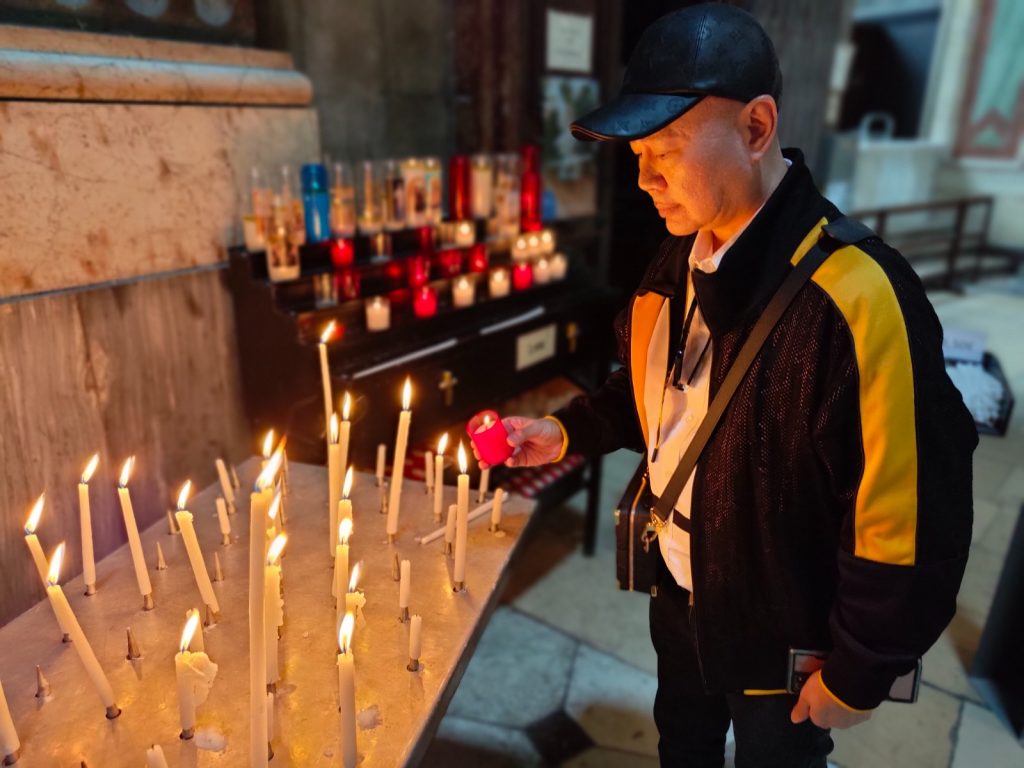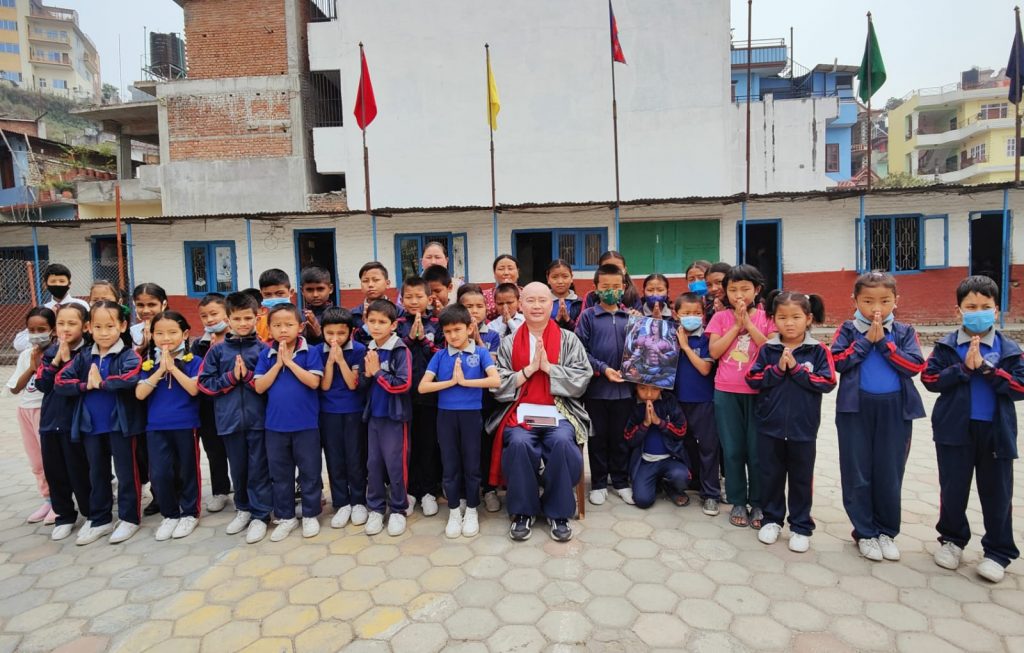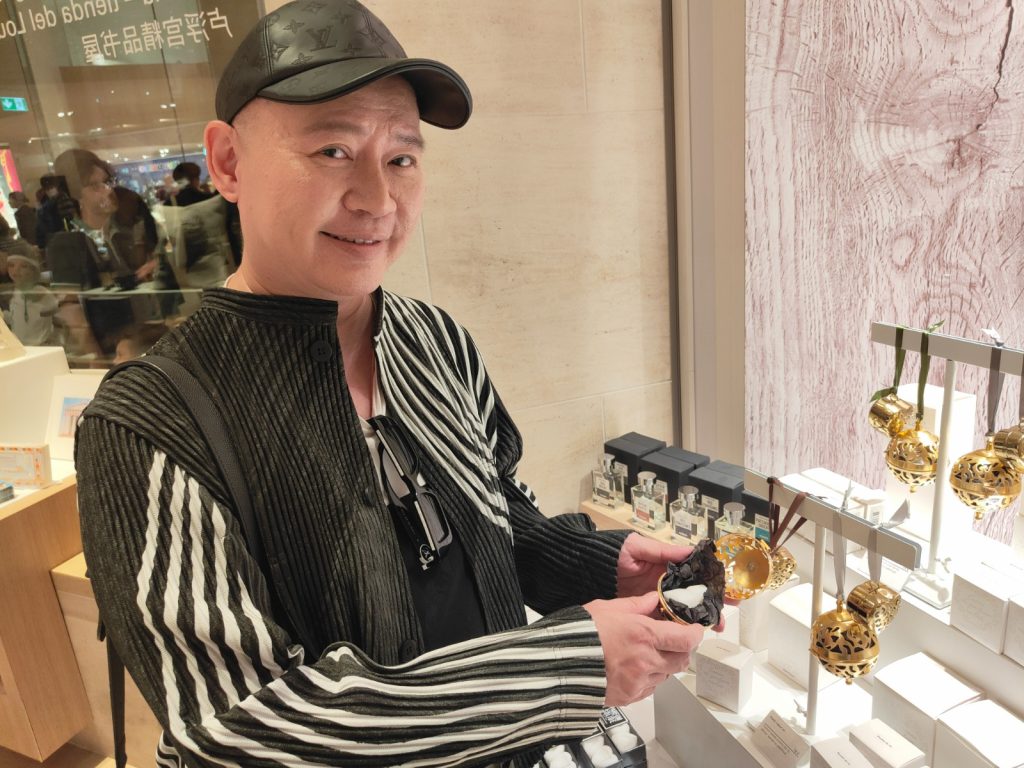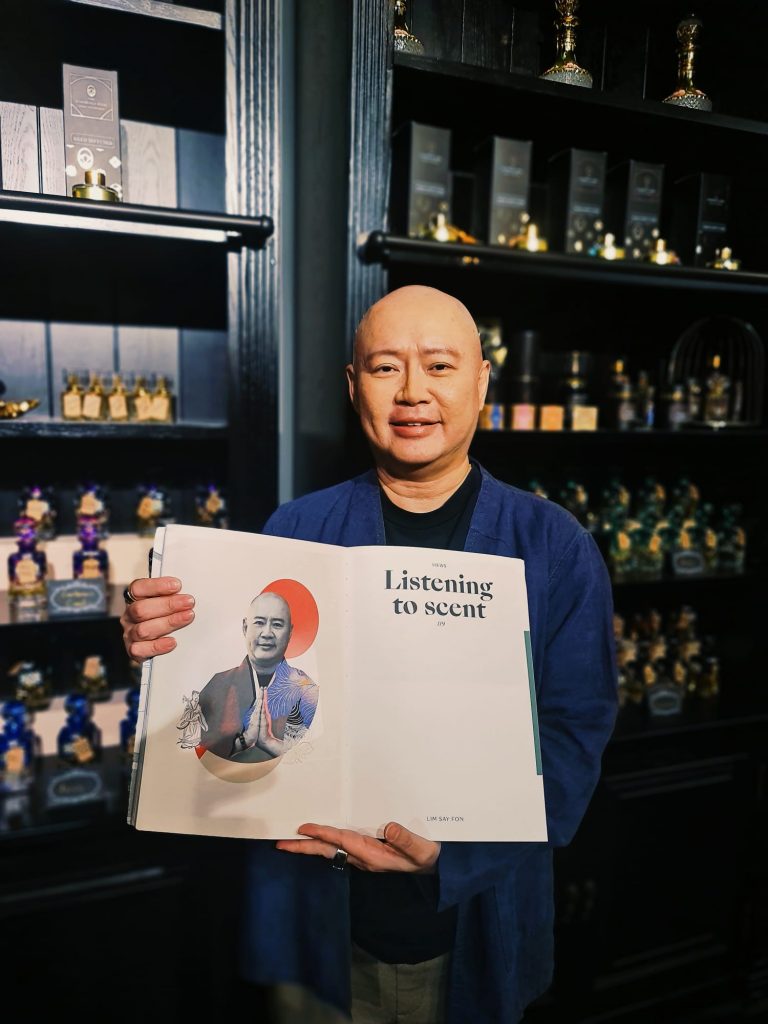Top image: Say Fon
In ‘Singaporeans Abroad’, we share with you the stories of locals who—thanks to living in a globalised world—have found success in different corners of the globe, whether financially, romantically, or for the pure joy of adventure.
We’ve recently heard from Kenneth, the Singaporean head chef at the world’s best restaurant, and Vino, the Singaporean living through Sri Lanka’s protests.
Now, we bring you Master Lim Say Fon, the stockbroker who decided to quit his job 10 years into his career to travel through Japan, China, and India to learn about the ancient art of incense.
Before I became a Kodo master, I was a stockbroker because of my interest in investments and trading. I stayed in the profession for ten years, but in 2010, at the age of 38, I realised that my job was meaningless.
The volatile stocks and shares I traded every day did nothing to contribute to the rest of humanity. The only elevation they brought was in the stress that I felt, bubbling and building within me with each passing day.
I wanted to do more than mere trading. I started thinking about having a mission or a greater responsibility towards humanity.
Back then, I would always turn to aromatherapy. I would light my favourite agarwood incense, allowing its pleasing, woody scent to fill the room. Stress would give way to serenity, a quiet calmness that washed over me. It reminded me to take better care of myself—my mind, body and soul.
Kodo: The Ancient Art of Incense
I was first exposed to Kodo—the art of Japanese Buddhist incense—at the age of 25. Kodo (香道), which translates to “the way of fragrance”, is the art of appreciating scents by using them within a structured code of conduct.
I guess you could say it was love at first sniff for me. I had always been a fan of Japanese culture, and I was intrigued by the calming effects of scents on my mental state.

Faced with growing disillusionment with my career as a broker, I decided to make incense my new purpose. To do this, I would have to become a full-time student and learn about incense and aromatherapy.
When I told my family that I would leave my job, they didn’t understand why. Everyone I told was either unfamiliar with Kodo or had never heard about it before in their life, which made them even more sceptical. They thought it was a strange decision, something very out of the norm.
Still, I quit my job, packed up my things and headed for China to learn about Kodo. I thought to myself—if I don’t do this now, I never will.
Leaving the Nest
I picked China as my first stop because of its long and rich history in the secrets of Buddhist incense appreciation. Unfortunately, the Cultural Revolution decades prior had destroyed many of the secrets I was searching for.
Undaunted and undeterred, I then went to Japan. There, I approached Japanese Kodo Master Hidetsugu Tanaka-sensei.
Initially, Master Tanaka was reluctant to impart the secrets of Kodo to me—an outsider and a non-Japanese. However, my persistence (and a well-connected friend’s intervention) finally persuaded him to change his mind.
Even then, he warned me that he was only allowed to teach me the basic steps but not the secrets of Kodo since I was an outsider. Despite this, I was grateful and content. It was already far more than any other outsider would be permitted.
As a trainee, I often had to remain standing for more than eight hours at a time to mix the herbs and scents together. It was a tiring job, designed to see if one had the dedication and perseverance to become a Kodo master.

One day, my Master decided that I was ready to learn. He took out a pen and paper to impart his ancient formulation to me. As he wrote it out, I realised with some sadness that even if I learned his ancient formulation, no one would ever believe that I, a foreigner, had been his student.
“Master, can you write me a certificate to prove that I have learned this from you?”
It was probably the most Singaporean thing ever—asking for a certificate—but he gave me one. So now, I have a certificate proclaiming me to be part of Master Tanaka’s 8th-generation lineage in Kodo.
The end of my training reminded me of the scene in Doctor Strange where Stephen Strange leaves Kamar-Taj and immediately becomes Sorcerer Supreme of New York. But I was not quite done with my studies yet. Upon graduation, I went to Koyasan in Osaka (on Master Tanaka’s recommendation) to further my knowledge of Shingon Buddhism.
My life as a student was a bit like being a member of the housekeeping department in a hotel. As part of my daily duties, I cleaned toilets, made beds, and washed plates and bowls. The seniors and masters would see if you were sincere in your daily chores before imparting their knowledge.
Finding My Way Back
After graduating from Osaka, I headed off on my next big adventure—India.
There, I learned about Ayurveda, yoga and chakras. I learned about sacred herbs, their effects on the human body and other mystical phenomena. I also gained an understanding of how different herbs are associated with different chakras and planets—for example, the crown chakra on top of the head, which is ruled by the planet Venus. To make crown chakra perfume, I would have to find herbs that correspond to both Venus and the crown chakra.
After this, it was time for me to use my knowledge to begin a new phase in my career as a Kodo master: teaching. I began teaching Kodo classes in different parts of China, from Shenzhen to Guangzhou to Anhui to Shanghai.
Using the techniques I had learned from my studies all around Asia, I created my own formula using only ingredients I could find from nature.
In the past, perfume was made of natural ingredients like the bark and roots of trees. These days, very few perfume brands still use natural ingredients in their formulations, preferring synthetic ones that offer better margins for profit.

I returned to Singapore soon after, where I set up my gallery, the Shambhala Kodo. It is a wellness centre specialising in aromatic incense therapy, aura, chakras scanning, and therapy.
I wanted to come back home because there is a lack of knowledge about Kodo here, and I wanted to educate Singaporeans about finding their way back to nature.
It was so difficult for me to gather all the knowledge I had learned from different parts of Asia, so I didn’t want it to go to waste.
I love teaching, and for that reason, I visit my gallery every day to meet my students who have questions about how to use aromatherapy to improve their lives.
Most of my students are between 35 and 50 years old, but there are also some younger students who come to me to learn how using incense can make them more alert and improve their studies.
I also do a lot of R&D to develop new products that will benefit my students and consumers.
Bridging the Old and the New
My favourite incense, Kinko, has properties that some users claim are magical, acting as a pain reliever for toothaches or menstrual cramps. However, there will always be some who remain sceptical about the powers of incense.
I guess it has to do with how ancient wisdom is often interpreted as mere superstition.
But the way I see it, we need to think of scientific explanations to bridge the gap between old customs and modern society. In the past, the traditional explanation might have been that burning incense improves your luck. Nowadays, we might say it improves your energy.
Maybe what the ancient texts referred to as spirits and demons are what we currently think of as ‘energy’ or ‘vibrations’.

My journey into the mystic arts of Kodo may have begun without purpose, but it is also what finally led me to mine. It is to spread positivity to as many people as possible and to be happy.
Besides sharing my Kodo knowledge with others, I am trying to give back to humanity by donating part of the profits from Shambhala Kodo and ManalaFON—an NFT project I launched—to benefit children with cancer in Singapore. I also dedicate revenue from my projects to helping children in Nepal and India by financing their education and constructing hostels for them to live in.
If I could say one thing to other Singaporeans who are in the position I was in once, feeling disillusioned and stressed by work: Know your passion, find your path. Be courageous and confident. Move forward to accomplish what you want in life and never say die. All things are possible.






